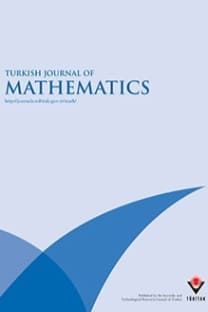Maximum entropy-based fuzzy clustering by using $L_1$-norm space
Maximum entropy-based fuzzy clustering by using $L_1$-norm space
___
- [1] C. J. Bezdek, Fuzzy Models for Pattern Recognition. The Institute of Electrical and Electronics Engineers, Inc., New York (1992).
- [2] D. Birkes, and Y. Dodge, Alternative Methods of Regression, Wiley (1991).
- [3] S. Geman, and D. Geman, Stochastic relaxation, Gibbs distributions, and the bayesian restoration of image, IEEE Trans. Pattern Anal. Machine Intell. vol Pami-6 (1984), 721-741.
- [4] M. Ghorbani, Model Selection for Probabilistic Clustering Using Cross-Validated Likelihood,Thesis, Tarbiat Modarres University, Tehran, Iran (2002).
- [5] D. E. Gustafson, and C. W. Kessel, Fuzzy clustering with a fuzzy covariance matrix, in: K.S. Fu, Ed., Proc. IEEE-CDC, 2 (1979), 761-766.
- [6] J. A. Hartigan, Clustering Algorithms, Wiley, New York (1975).
- [7] A. Isazadeh, and M. Ghorbani, Fuzzy c-means and its generalization by Lp-norm space,WSEAS Transaction on Mathematics, 2 (2003), 168-170.
- [8] K. Jajuga, L1-norm based fuzzy clustering, fuzzy sets and systems, 39 (1991), 43-50.
- [9] S. Miyamoto, and Y. Agusta, Efficient algorithms for $L_p$ fuzzy c-means and their termination properties, in Proc. 5th Conf. Int. Federation Classification Sco., Kobe, Japan (1996),255-258.
- [10] S. Miyamoto, and M. Mukkaidono, Fuzzy c-means as a regularization and maximum entropy approach, IFSA World Congress Proceedings, 11 (1997), 86-92.
- [11] H. J. Zimmermann, Fuzzy Set Theory and Its Applications, Second Edition. Kluwer Academic Publisher, Boston, London (1991).
- ISSN: 1300-0098
- Yayın Aralığı: 6
- Yayıncı: TÜBİTAK
On Groups with the Weak Wide Commensurable Property
Mahmut KUZUCUOĞLU, Erdal ÖZYURT, Ayşe BERKMAN
Asymptotic Formulas for the Resonance Eigenvalues of the Schrödinger Operator
Şirin ATILGAN, Sedef KARAKILIÇ, Oktay A. VELİEV
Self-Adjoint Boundary Value Problems on Time Scales and Symmetric Green's Functions
Self-adjoint boundary value problems on time scales and symmetric Green' s functions
The Basis Number of the Semi-Composition Product of Some Graphs I
M. Y. ALZOUBI, E. A. RAWASHDEH, M. M. M. JARADAT
Corrigendum uniqueness of primary decompositions [Turkish J. Math. 27 (2003), 425-434]
Maximum Entropy-Based Fuzzy Clustering by Using L1-norm Space
On Generalization of The Quasi Homogeneous Riesz Potential
